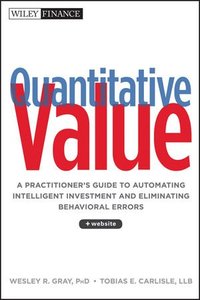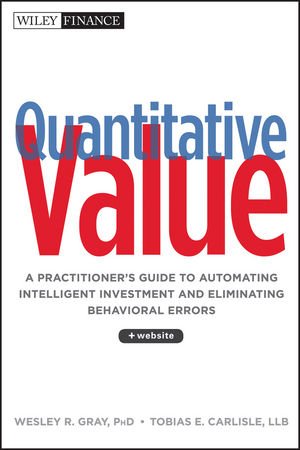Quantitative Value: A Practitioner's Guide to Automating Intelligent Investment and Eliminating Behavioral Errors By Wesley Gray, Tobias Carlisle
2012 | 288 Pages | ISBN: 1118328078 | EPUB | 5 MB
2012 | 288 Pages | ISBN: 1118328078 | EPUB | 5 MB
Legendary investment gurus Warren Buffett and Ed Thorp represent different ends of the investing spectrum: one a value investor, the other a quant. While Buffett and Thorp have conflicting philosophical approaches, they agree that the market is beatable. In Quantitative Value, Wesley Gray and Tobias Carlisle take the best aspects from the disciplines of value investing and quantitative investing and apply them to a completely unique and winning approach to stock selection. As the authors explain, the quantitative value strategy offers a superior way to invest: capture the benefits of a value investing philosophy without the behavioral errors associated with "stock picking." To demystify their innovative approach, Gray and Carlisle outline the framework for quantitative value investing, including the four key elements the investment process: 1) How to avoid stocks that can cause a permanent loss of capital: Learn how to uncover financial statement manipulation, fraud, and financial distress. 2) How to find stocks with the highest quality: Learn how to find strong economic franchises, and robust financial strength. Gray and Carlisle look at long term returns on capital and assets, free cash flow, and a variety of metrics related to margins and general financial strength. 3) The secret to finding deeply undervalued stocks: Does the price-to-earnings ratio find undervalued stocks better than free cash flow? Gray and Carlisle examine the historical data on over 50 valuation ratios, including some unusual metrics, rare multi-year averages, and uncommon combinations. 4) The five signals sent by smart money: The book uncovers the signals sent by insiders, short sellers, shareholder activists and institutional investment managers. After detailing the quantitative value investment process, Gray and Carlisle conduct a historical test of the resulting quantitative value model. Their conclusions are surprising and counter-intuitive. The book includes a companion website that offers a monthly-updated screening tool to find stocks using the model outlined in the book, an updated back-testing tool, and a blog about recent developments in quantitative value investing. For any investor who wants to make the most of their time in today's complex marketplace, they should look no further than Quantitative Value.



